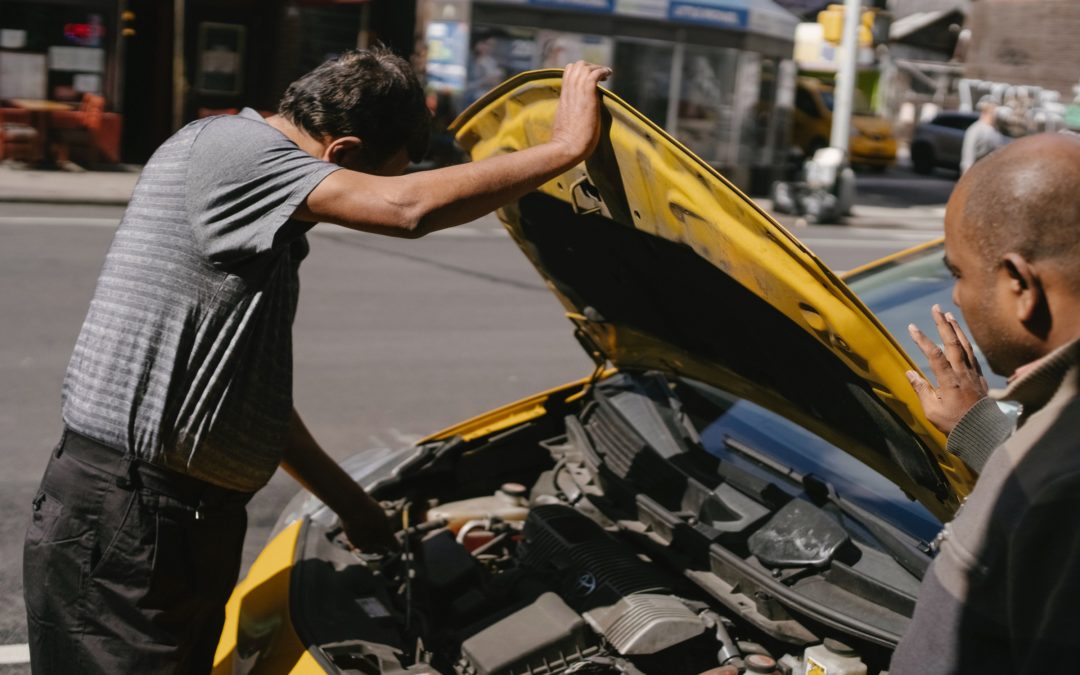The typical vehicle owner today rarely looks under the hood for trouble. Most wait until a warning light appears on the dashboard before addressing vehicle issues. But there is definitely some merit in the old adage of “checking under the hood” as a proactive way of maintaining your vehicle. If you want to keep your vehicle running smoothly, you might consider some proactive vehicle maintenance by doing a periodic check under the hood. Not only can you address potential issues, but you will extend your vehicle’s lifespan and possibly hold its value longer.
In this blog, we look at the key proactive vehicle maintenance items you can address under the hood on your own or bring to the attention of an auto service professional.
Getting Started
First, you should be familiar with how to open the hood. There may be a lever inside the vehicle on the driver side to “pop” the hood but most vehicles also require you to unhook the latch to open the hood. Reach your hand under the hood and feel for a latch or hook that will release the hood. Once opened, make sure that the hood is secured so it does not close while you are inspecting the engine.
Under the Hood Routine Vehicle Maintenance
So, what should you be looking for under the hood? Once the hood is up, here’s a few general steps to follow that only take a few minutes of your time:
Do a visual inspection of the engine: A quick visual inspection may reveal something that has gone awry inside your engine. You may not know what you’re looking for but an unusual problem in the engine may be apparent even by the untrained eye:
- Are there any broken or torn hoses or belts?
- Do you see any loose or missing caps?
- Do you see any fluids or stains on engine parts?
- Remove any dirt and debris that might be inside the engine such as leaves, pine needles, etc.
- Do the battery terminals look clean from dirt and corrosion? Are the battery cables securely attached to the positive and negative connectors of the battery?
Check your vehicle fluids: There are several vehicle fluids that you can check to ensure your engine has the adequate levels to operate effectively. Consult with your owner’s manual on where each of these fluid reservoirs are located inside your engine.
- Windshield wiper fluid: Make sure the wiper fluid is filled to the full line. You don’t want to be in a situation when you need to clean your windshields and there’s no wiper fluid. This is one item you should check monthly, especially if you are driving in heavy winter conditions with road salt or snow.
- Motor oil: Find the dipstick and pull it all the way out of the reservoir. Wipe it clean and stick it back into the slot all the way until it is seated in position. Now, pull it out again and read the oil measurement. The oil should be right at the level indicated on the dip stick. If it is below, consult with your owner’s manual or contact our auto repair shop in Fort Collins, Colorado. Oil can be checked when the engine is warm or cool.
- Coolant/antifreeze: The coolant and antifreeze are important to keep your engine from freezing in colder temps and from overheating in the summer. Always check the coolant level when the engine is not running and is cooled down. Make sure the level is at the Full mark. If it is below, then consult with your owner’s manual or check with a service professional on adding more coolant. Coolant should always be a 50/50 mixture of water and coolant.
- Other important fluids: If you are comfortable enough to check further and have reviewed your owner’s manual, it is also advisable to check the Transmission, Brake, and Power Steering fluid levels. If you determine there may be low levels in any of these fluids, consult with your owner’s manual or a service professional to replenish them and look for any other issues.
- Check under the vehicle: Anything that might be leaking from inside your engine may make it to the ground underneath your vehicle. It is always advisable to inspect the ground where you regularly park to look for any type of fluid leaks. If you notice any, then a check in the engine is helpful. If you are unsure, make sure to check with an auto service professional.
A few minutes of periodic proactive maintenance can help you keep your vehicle running smoothly and efficiently. Make sure to get into the habit of checking under the hood and you may circumvent larger problems in the long run.
If you have questions or concerns about your anything under your vehicle hood, call or stop by Campus Auto Repair to schedule an appointment for a full-service inspection and recommendations for any repairs or fluid replacements.

